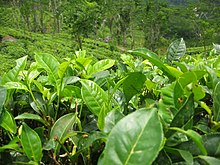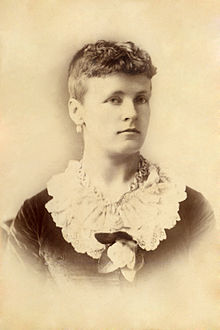Camellia
Camellia flowers throughout the genus are characterized by a dense bouquet of conspicuous yellow stamens, often contrasting with the petal colors.Most species of camellias also require a large amount of water, either from natural rainfall or from irrigation, and the plants will not tolerate droughts.One of these is the aforementioned C. reticulata, grown commercially in thousands for horticulture and oil production but rare enough in its natural range to be considered a threatened species.The German botanist Engelbert Kaempfer reported[15] that the "Japan Rose", as he called it, grew wild in woodland and hedgerow, but that many superior varieties had been selected for gardens.Europeans' earliest views of camellias must have been their representations in Chinese painted wallpapers, where they were often represented growing in porcelain pots.His gardener James Gordon was the first to introduce camellias to commerce, from the nurseries he established after Lord Petre's untimely death in 1743, at Mile End, Essex, near London.[16] With the expansion of the tea trade in the later 18th century, new varieties began to be seen in England, imported through the British East India Company.The camellia was imported from England to America in 1797 when Colonel John Stevens brought the flower as part of an effort to grow attractions within Elysian Fields in Hoboken, New Jersey.Their revival after World War I as woodland shrubs for mild climates has been paralleled by the rise in popularity of Camellia sasanqua.







Camellia (disambiguation)Camellia sasanquaScientific classificationPlantaeTracheophytesAngiospermsEudicotsAsteridsEricalesTheaceaeSynonymseasternsouthern AsiaHimalayasIndonesiaspeciesC. sinensisC. japonicaC. sasanquacultivarsC. oleiferatea seed oilLinnaeusGeorg Joseph KamelCamellia sinensisevergreenshrubspollinatedsunbirdscapsuleacid soilschalkycalciumirrigationdroughtsVietnamlarvaeLepidopteraCamellia japonicafungalparasitemycelia sterile PF1022metaboliteemodepsideanthelmintichabitat destructionthreatened speciesCamellia reticulataselective breedingcooking oilfossilEoceneOligoceneBulgariaWashingtonUnited StatesEngelbert KaempferThorndon HallRobert James, Lord PetreJames Gordontea tradeBritish East India CompanySir Abraham HumeWormleyburyColonel John StevensElysian FieldsHobokenNew JerseyMarie DuplessisLa Dame aux caméliasLa TraviataorchidhybridsdoubleC. × williamsiiC. saluenensiscalcifugesrhododendronsfrostsList of Award of Garden Merit camelliasRoyal Horticultural SocietyAward of Garden MeritCamellia azaleaCamellia petelotiiPlants of the World OnlineCamellia amplexicaulisCamellia chrysanthoidesCamellia crapnellianaCamellia cuspidataCamellia edithaeCamellia euphlebiaCamellia fleuryiCamellia fraternaCamellia gilbertiiCamellia granthamianaCamellia grijsiiCamellia hiemalisCamellia hongkongensisCamellia rusticanaCamellia langbianensisCamellia luciiCamellia lutchuensisCamellia oleiferaC. nitidissimaCamellia pleurocarpaCamellia ptilophyllaCamellia pubicostaCamellia pubipetalaCamellia rosifloraCamellia saluenensisCamellia taliensisCamellia yunnanensissuffragetteGreenville, AlabamaSacramento, CaliforniaFort Walton Beach, FloridaSlidell, LouisianaMcComb, MississippiNewberg, OregonThomson, Georgiastate flowerAlabamabowl gameMontgomery, AlabamaCamellia BowlAlexandre Dumas fils

